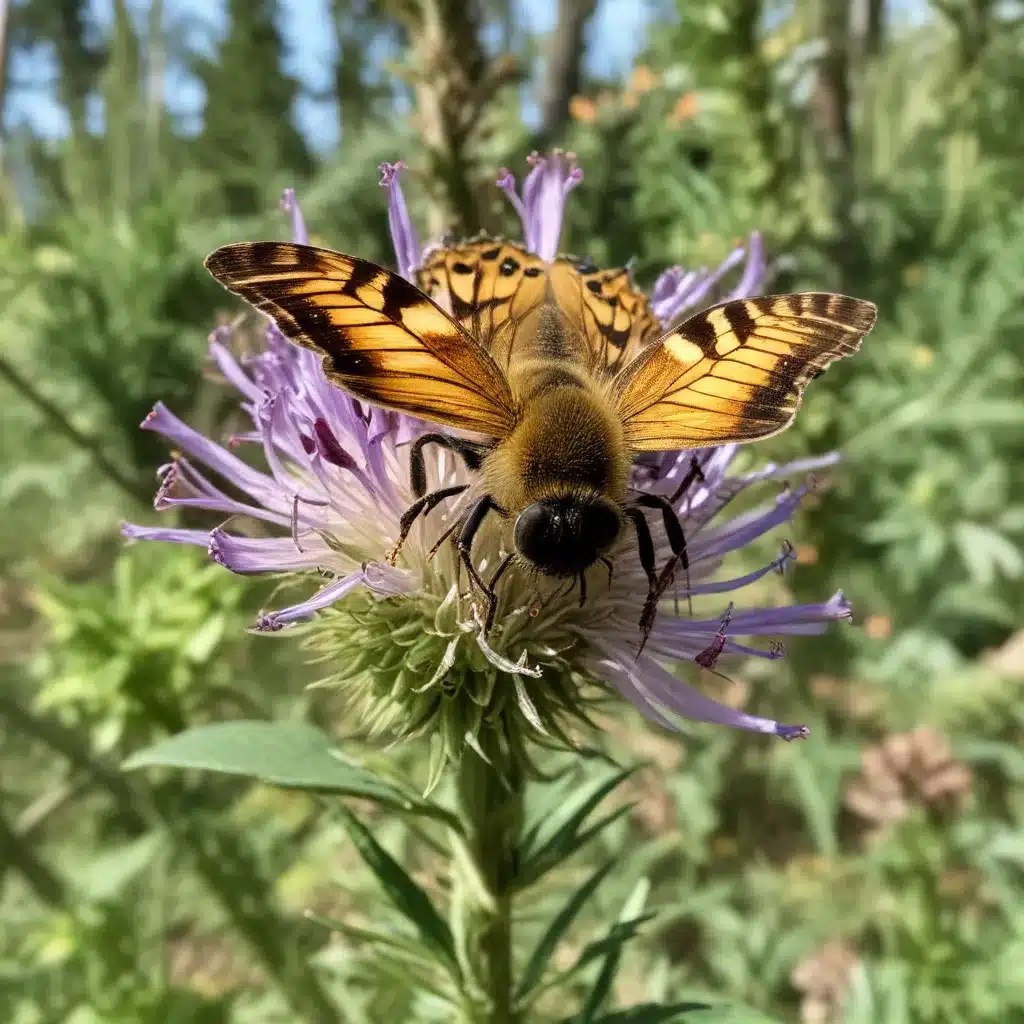
The Vital Importance of Pollinators
From the buzzing of honeybees flitting between the wildflower patches to the graceful flutter of butterflies alighting on vibrant blooms, pollinators play an absolutely vital role in the delicate balance of our ecosystem. These diverse creatures, ranging from bees and butterflies to moths, hummingbirds, and even some small mammals, are responsible for the fertilization of over 75% of the world’s flowering plants, including many of the fruits and vegetables we enjoy. Without pollinators, our agricultural productivity would plummet, and the very foundation of our food system would be threatened.
Unfortunately, pollinator populations are facing unprecedented challenges. Habitat loss, pesticide use, climate change, and other human-driven factors have contributed to alarming declines in bee, butterfly, and other pollinator species around the globe. At Crooked Pines Farm, we’re committed to doing our part to support and protect these enchanting creatures through sustainable land management practices and community education.
Exploring the Diverse World of Pollinators
Venture with us into the captivating realm of pollinators, and you’ll discover a dazzling array of winged wonders. Honeybees, with their intricate social structures and waggle dances, are perhaps the most well-known pollinators. But did you know that there are over 20,000 species of bees worldwide, each with their own unique adaptations and behaviors? From the solitary mason bees that nest in small cavities to the bumblebees with their fuzzy bodies and vibrant colors, these industrious insects are true marvels of nature.
Butterflies, with their delicate wings and mesmerizing life cycles, are another enchanting group of pollinators. As they flit from flower to flower, sipping nectar through their long, proboscis, they transport pollen from plant to plant, enabling the vital reproductive process. The monarch butterfly, with its stunning orange and black pattern, is perhaps the most iconic, but you’ll find a dazzling array of species, each with its own unique markings and adaptations.
Beyond bees and butterflies, the world of pollinators is teeming with other fascinating creatures. Hummingbirds, with their lightning-fast wings and rainbow-hued feathers, are expert nectar-feeders, darting from blossom to blossom. Moths, with their fluffy bodies and intricate wing patterns, are nocturnal pollinators, playing a crucial role in the ecosystem after the sun sets. Even some small mammals, such as bats and squirrels, contribute to the pollination of certain plant species.
Crooked Pines: A Pollinator’s Paradise
At Crooked Pines Farm, we’ve created a veritable pollinator’s paradise, with a diverse array of native and heirloom plant species that cater to the unique needs of our winged and furry friends. Our lush meadows, wildflower gardens, and fruit orchards provide abundant nectar and pollen resources, while our hedgerows and woodland edges offer vital nesting and roosting sites.
Through our sustainable land management practices, we’ve cultivated a micro-climate that supports a thriving pollinator community. We strategically plant companion crops, use organic pest control methods, and avoid harsh pesticides that can harm pollinators. Our mulching and composting techniques also help to nurture the soil, creating a healthy, vibrant ecosystem.
But our commitment to pollinators doesn’t stop at the farm’s edge. We actively engage our community, hosting educational events and workshops that inspire both children and adults to become stewards of these enchanting creatures. From nature trails that highlight pollinator-friendly flora to hands-on learning activities, we strive to foster a deep appreciation for the vital role that pollinators play in our world.
The Enchanting Beauty of Pollinators
Take a closer look at the pollinators that grace our farm, and you’ll be captivated by their intricate adaptations and mesmerizing aesthetics. Bees, with their compound eyes and antennae, can perceive the world in ways far beyond our human senses, detecting ultraviolet patterns on flowers and communicating through complex pheromones.
Butterflies, with their delicate, iridescent wings, are true masterpieces of nature. Their vibrant colors and intricate patterns serve as both camouflage and signaling mechanisms, helping them to attract mates and ward off predators. And their remarkable life cycles, from caterpillar to chrysalis to adult, are nothing short of magical.
The pollinator-plant interactions at Crooked Pines are equally enchanting. We marvel at the co-evolutionary relationships that have developed over millennia, with flowers evolving nectar and pollen rewards to attract their pollinators, and the pollinators, in turn, adapting to efficiently collect and transport the precious reproductive material.
Preserving the Pollinator’s World
At Crooked Pines, we’re deeply committed to preserving the enchanting world of pollinators for generations to come. Through our habitat restoration efforts, we’re expanding and enhancing the diverse microclimates and native plant communities that support a thriving pollinator population.
Our farm also participates in various citizen science initiatives, where visitors can contribute to important pollinator research and monitoring efforts. By tracking bee and butterfly populations, observing nesting behaviors, and documenting plant-pollinator interactions, we’re helping to build a deeper understanding of these captivating creatures and the challenges they face.
Beyond our farm, we advocate for pollinator-friendly policies and legislation, and we encourage our community to adopt pollinator-friendly practices in their own backyards and gardens. From planting native wildflowers to avoiding pesticides, each of us can play a vital role in creating a world that celebrates and sustains the enchanting pollinators that are the very fabric of our ecosystem.
So come explore the wonders of Crooked Pines Farm, where you’ll discover the captivating realm of pollinators in all their glory. Whether you’re marveling at the waggle dances of honeybees, watching in awe as butterflies take flight, or simply appreciating the hummingbirds darting between the blooms, you’ll leave with a deeper understanding and appreciation for these enchanting creatures that are so essential to the health of our world.


